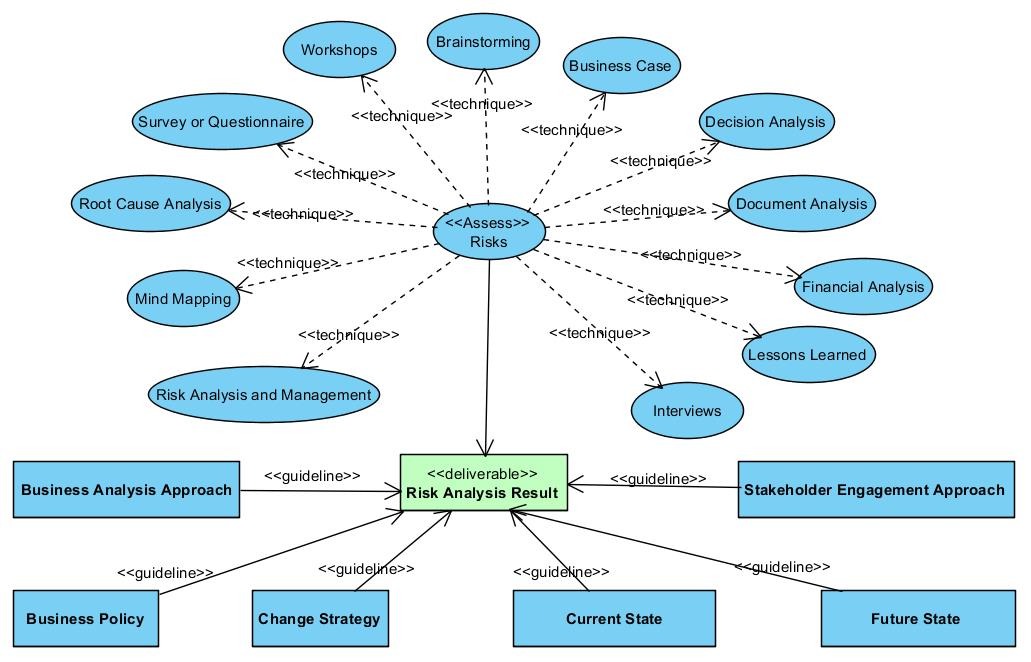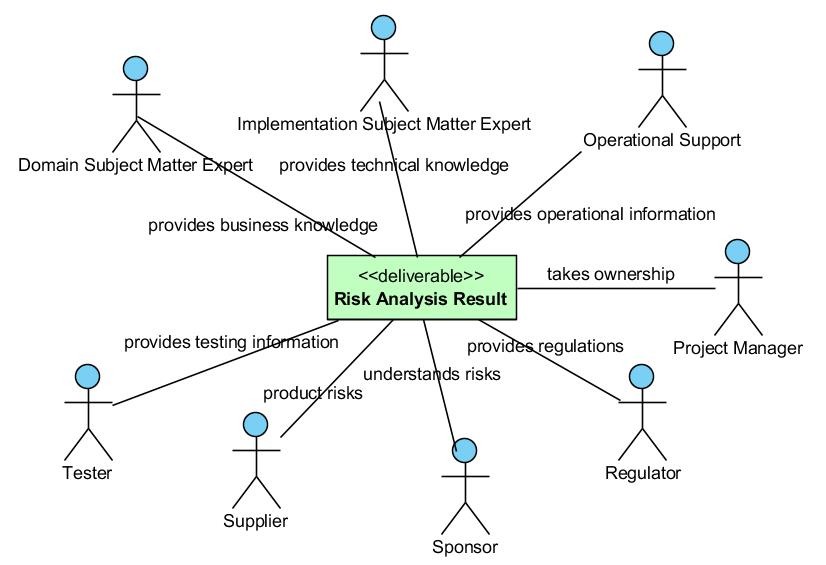Assess Risks
The purpose of Assess Risks is to understand the consequences to the enterprise as a result of a transition to the future state. An understanding of the potential impact of those risks can be used to make a recommendation about a course of risk mitigation.
Guidelines/Tools and Techniques
The guidelines/tools and techniques used to create risk analysis results.


Assess Risks - Uses Brainstorming, Workshops, Survey or Questionnaire, Root Cause Analysis, Mind Mapping, Risk Analysis and Management, Business Case, Decision Analysis, Document Analysis, Financial Analysis, Lessons Learned and Interviews as techniques to create a Risk Analysis Result:
Risk Analysis Results – Are created using the Current State Description, the Business Analysis Approach, Business Policies, the Stakeholder Engagement Approach, the Change Strategy, and the Future State Description as tools and guidelines.
The relationships between these guidelines, tools, techniques and Requirements, are detailed in the BABOK under the Guidelines and Tools and Techniques sections of the Assess Risks task.
Workers
The people involved with performing the Assess Risks task.


The relationships between these roles and Risk Analysis Results, are detailed in the BABOK under the Stakeholders section of Assess Risks task.
Domain Subject Matter Expert - Provides business knowledge in their area of expertise.
Implementation Subject Matter Expert - Provides technology knowledge in their area of expertise.
Operational Support - Identifies likely risks and their impact to enterprise operations.
Project Manager - Is the primary responsibility for managing and mitigating risk to the project.
Regulator - identifies any risks associated with adherence to laws, regulations, or rules.
Sponsor - Needs to understand risks to authorize the change.
Supplier - Provides risks associated with using their product.
Tester - identifies risks associated with validation and verification of the change.